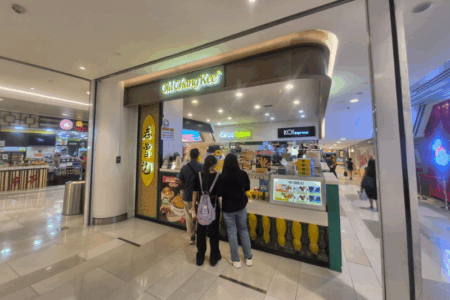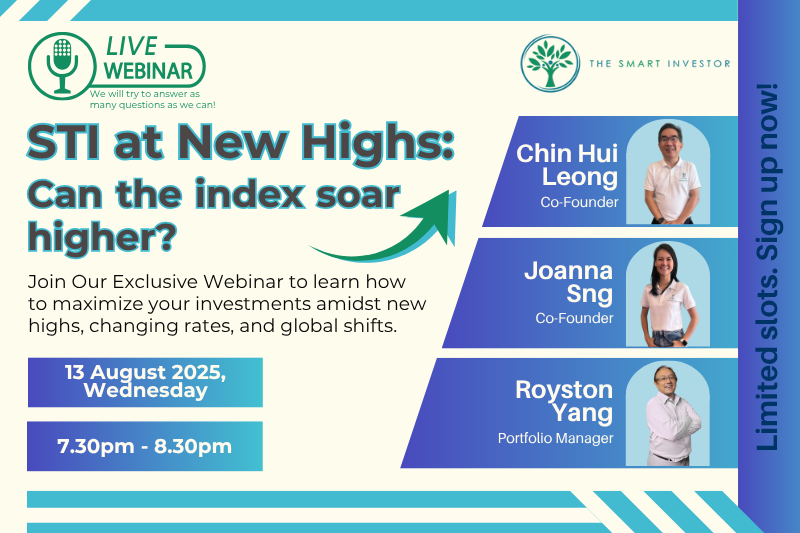The Straits Times Index (SGX: STI) increased by 2.2% in August 2025.
But not every stock joined the rally.
A few big names ended up at the bottom of the pack.
Sembcorp Industries (SGX: U96), ST Engineering (SGX: S63), and CapitaLand Ascendas REIT (SGX: A17U) all reported solid numbers for the first half of the year.
Yet their share prices slid last month.
Let’s break down why.
Sembcorp Industries: Total Returns of -20% in August
At first glance, Sembcorp’s latest results look decent.
Revenue dipped 8% year on year to S$2.9 billion, but profit held up, down a little over 1% to S$536 million compared to S$543 million a year ago.
Here’s the surprising bit: the company’s free cash flow improved sharply, flipping from negative figures to a healthy S$241 million.
Management even lifted its interim dividend by 50% compared to a year ago.
Don’t you find this odd?
Why did the stock tank 20% in a single month with respectable numbers?
Here’s my take: the problem isn’t in its fundamentals or results; instead, it’s the mismatch between expectation and reality.
Investors had been riding high on Sembcorp’s green transition story, banking on renewables growth to accelerate.
But the results told a mixed story.
Lower pool prices in Singapore’s Gas and Related Services segment, and the absence of contribution from the divested SembEnviro waste management business, weighed on its revenue.
To be fair, renewables did deliver growth from their new capacity in India, Vietnam, and Oman.
Then again, Sembcorp also expects a softer renewable performance in the second half due to seasonality and higher curtailment in China.
And then there’s the debt.
Sembcorp still carries S$8.3 billion in borrowings.
In a market jittery about leverage, that adds another weight on sentiment.
So, while the core business is still solid — cash flows are improving, dividends are rising, and management remains confident, the market had priced in a much faster, smoother growth path.
When reality fell short of those lofty expectations, the stock paid the price.
ST Engineering: Total Returns of -12% in August
On the surface, ST Engineering’s latest financial figures look solid.
In the first half of 2025 (1H’25), revenue rose 7.2% year on year to S$5.9 billion, operating profit jumped 15.2% to over S$602 million year on year, and net profit surged nearly 20% to around S$404 million.
That’s from the growth across all three of its core segments — Commercial Aerospace, Defence & Public Security, and Urban Solutions and Satcom.
So far, so good.
Free cash flow eased 7.3% year on year to S$484.5 million, mainly due to working capital swings, but it’s still healthy.
That said, as of 30 June 2025, the group was sitting on S$354 million in cash against total borrowings of S$5.5 billion.
Conservative investors may purse their lips at this debt.
But let’s not forget what’s behind its revenue growth.
ST Engineering’s performance was driven by stronger Engine MRO and Nacelles revenue in Commercial Aerospace, contributions from every sub-segment in Defence and Public Security, and a better margin mix with cost savings across the board.
Then, there’s dividends to consider.
ST Engineering kept its interim dividend steady at S$0.04 per share, while signalling plans to raise the full-year payout to S$0.18 and introduce a progressive dividend policy from 2026.
There’s a good reason too.
The company’s order book stood at a hefty S$31.2 billion, with S$5 billion set for delivery this year.
By almost every measure, things look as healthy as they can be.
Big Ws out here, but why did the stock fall 12% in a single month?
Simply put, it wasn’t the results — it was the price tag.
ST Engineering’s stock had run up in July and was trading at a premium valuation.
Hence, even strong numbers weren’t enough to meet the sky-high expectations.
CapitaLand Ascendas REIT: Total Returns of -4% in August
CapitaLand Ascendas REIT is holding its ground as Singapore’s largest diversified REIT with a portfolio of 225 properties valued at S$16.8 billion as at 30 June 2025.
And what are these properties?
The REIT owns a multi-asset portfolio comprising Business Space and Life Sciences, Industrial and Data Centres, and Logistics properties across developed markets including Singapore, Australia, the US, the United Kingdom and Europe.
For the first half of 2025, gross revenue came in at S$754.8 million, down just 2% year on year, while net property income slipped only 0.9% to S$523.4 million — a clear sign of operational resilience despite some property divestments in the UK and Australia.
Additionally, the REIT declared a distribution per unit of around S$0.0748, slightly lower than last year due to a larger unit base from equity fundraising.
Resilience is the key word and it shows up in its operating metrics too.
Portfolio occupancy stayed solid at 91.8%, and rental reversion remained strong at 9.5%.
CapitaLand Ascendas REIT is clearly playing the long game.
The REIT has S$1.18 billion in committed investments, including 9 Tai Seng Drive (a data centre) and 5 Science Park Drive, both completing in the second half of 2025.
On top of that, its ongoing redevelopments worth S$380 million should give returns a nice boost in the future.
So why did the stock fall nearly 4% in August?
Honestly, it’s not about the fundamentals.
The REIT is holding up well, but markets sometimes react to divestments, a change in base units, or just high expectations — as far as I can tell, it’s not about the actual business.
Don’t let market uncertainty hijack your financial dreams. While headlines scream gloom, 5 Singapore companies have been quietly building wealth and paying reliable dividends. You’re probably overlooking them. Discover these resilient giants and their secrets to sustained income, even through global storms. Click here to download your free report now and secure your financial future!
Follow us on Facebook, Instagram and Telegram for the latest investing news and analyses!
Disclosure: Renee does not own any share of the companies mentioned above.






